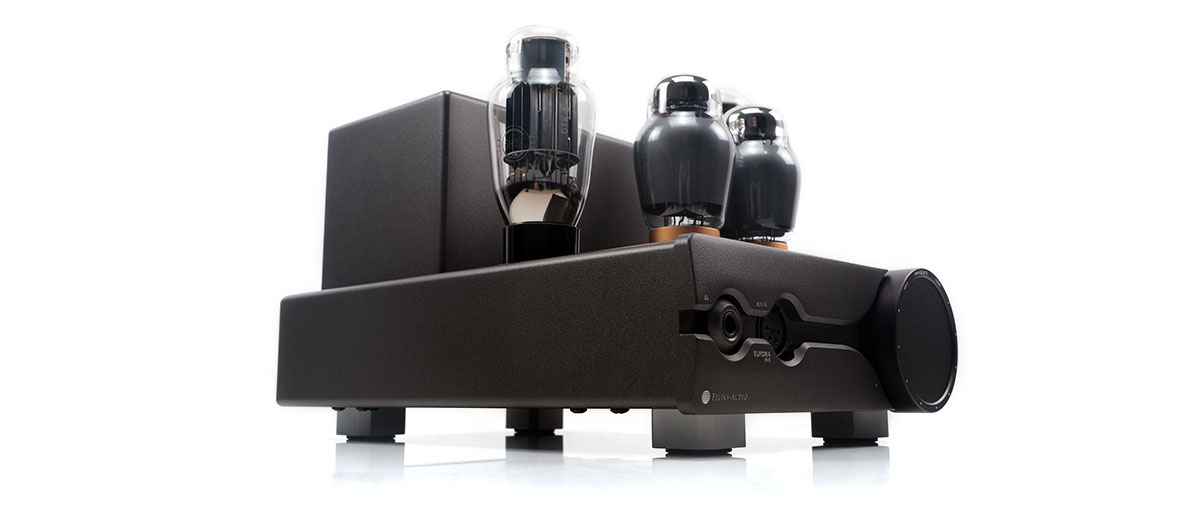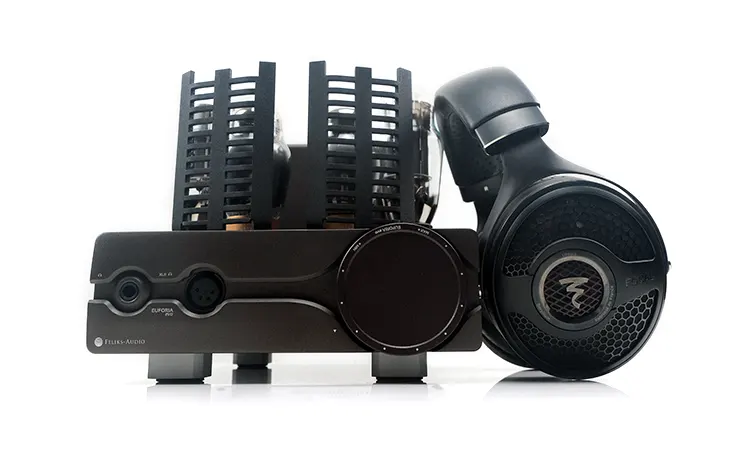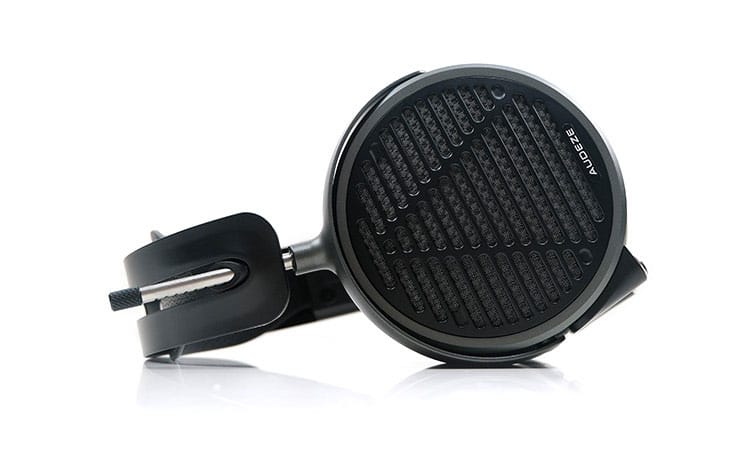Sound Impressions
Summary
The Feliks Audio EUFORIA evo is a deliciously smooth and velvety-sounding OTL amplifier with vocal performances that are richly textured and euphonic in tone. It also has an impressive level of spaciousness with plenty of headroom for a wide range of headphones.
It delivers a superb synergy with high impedance dynamic drivers headphones such as the ZMF Headphones Atrium and for me, one of the better tube amplifiers at this price range for TOTL options such as the Utopia 2022.
That is its specialty, its calling card, and one where at times, at least on a preference level, I would opt for over the Envy if I want some beautifully saturated vocal performances despite it being the flagship amp in Feliks’ lineup.
No, it’s not for more demanding planar headphones, there is not enough power there for the likes of the HIFIMAN Susvara or the Audeze LCD-4. Efficient planar headphones such as the Audeze MM-500 and the Meze Audio Empyrean are much stronger pairings.
However, I would advise that even for efficient planars to take a load of the EUFORIA evo’s volume pot with a pre-amp as it can distort a little at higher volumes. With a quality pre-amp, you can blast away with planars and get a very low microphonic performance from the evo’s tubes.
Sources will have an influence on the EUFORIA evo presentation. Be it a dedicated DAC or even a line-out from a quality DAP you can vary it from close to neutral/natural sounding in the case of the Chord Electronics Qutest, spacious and analog toned with the Holo Audio Spring DAC 2, or towards a fuller and weightier sound with the 1-BIT DAC pre-amp out of the Cayin N7.
Timbre
At a high level, I would describe the EURFORIA evo’s tonal coloration as relaxed, relatively warm, and embracing but not overly smoothed over and delivering satisfying levels of textured detail with good weight within every note.
It does not offer that punchy urgency from the Envy or even the older Auris Audio HA-2SF. Nor does it convey quite the same level of treble air and sparkle as the SETA Cayin HA-300MK2.
If anything, compared to those three amps, the EUFORIA evo is a slightly darker-sounding cousin with a little less treble-forwardness, yet still remaining satisfyingly spacious, especially through the mids. I also think it competes as well and at times better for inviting or pleasing vocal performances.
It is neigh on impossible to create any jarring harmonic dissonance with this amplifier. Particularly if you are pairing it with headphones such as the Atrium which is a smooth operator in its own right.
With this pairing, percussion timbre bias is more to the natural side rather than a dry or bright sound. In fact, such is the smoothness, it’s the Envy and the HA-2SF that came across as brighter or at least neutral in comparison and I would never normally give those two amplifiers that type of description.
I would be remiss in signing off on the EUFORIA evo’s coloration without mentioning the low-end performance. It’s weighty with the right source but slightly languid in pace with a longer decay as you might expect.
It’s not as aggressive or as tight as the flagship Envy but it has a more fulsome sub-bass presence compared to the HA-2SF, and one which works really well with the Atrium Closed Back Olivewood Edition’s punch sound signature.
Staging & Dynamics
I was very impressed with the staging properties of the EUFORIA evo with our tested headphones, particularly so with the Utopia 2022.
It casts a wide and deep soundstage with the only drawback being a slightly darker set of highs compared to the improved sparkle and air from the treble performance of higher-end amps such as the very holographic Cayin HA-300MK2.
However, mids spacing and instrumental separation were superior to the more center-focused Auris Audio HA-2SF with a slightly deeper and stronger sub-bass presence to give it some pleasing heft on the lows.
All of this played out superbly well with the Utopia 2022 which tends to project a slightly narrower staging quality compared to the Atrium. With the HA-2SF it felt a little more forward but more cramped and comparatively congested with both instrument and vocal competing for the same midrange space.
With the EUFORIA evo, the airiness and general stereo field width improved. This in turn allowed vocals to improve in terms of listening focus and relative gravitas with that better sub-bass response giving them some additional weight.
The decay is a little on the longer side as you might expect so the presentation does not have the necessary tightness of a solid-state transistor-based amplifier or the Envy’s solid-state rectifier. Headphones such as the Susvara or the Diana TC, headphones with an articulate and speedy transient response might not sound optimal with the EUFORIA evo.
A final word on the crossfeed option. With modern tracks, I felt the balance was lost a little with a lot of mids and treble presence diminution as well as less air. Older recordings with whacky or wide imaging fared much better with a more natural bass weight and centered image.
Synergy
Efficiency
The Feliks Audio EUFORIA evo has a single rating of 280mW into 300Ω @1kHz which is a bit lower than the flagship Envy which is rated at around 500mW for 600Ω equivalents but still very healthy.
The EUFORIA evo does have a 65Ω PO output impedance specification so it is going to work very well voltage-wise with higher-load headphones such as the 80Ω Utopia 2022 and the 300Ω Atrium open or closed-back versions.
Planar owners should not be put off from looking at the EUFORIA evo as an option either. Those with newer and more efficient models such as Audeze’s MM-500 will find that the evo has enough current and voltage to drive them quite well. Meze Audio’s Empyrean and Elite should pose no issues either at 100dB and 101 dB SPL respectively.
I would say though that if you are a HIFIMAN Susvara or Abyss Headphones Diana TC owner then that big drop in efficiency to 90 dB @1kHz SPL or lower will make these types of demanding planar headphones less than ideal for pairing with the EUFORIA evo.
Also, despite the more efficient rating of the Audeze LCD-5 compared to the LCD-4, this proved to be a tricky pairing with the EUFORIA evo volume being pushed too hard and some evident distortion creeping in. In these cases, I would point you to the more powerful Envy as the better amplifier pairing.
Dynamic Driver Headphone Pairings
No surprise here but the EUFORIA evo is a wonderful pairing with dynamic driver headphones with a higher impedance rating. Quality examples of this included the Utopia 2022 and both the Atrium and the Atrium Closed versions.
The Atriums sounded expansive, with some really nice depth and sub-bass texture. More so than the Auris Audio HA-2SF pairing and maybe just as good as the Cayin HA-300MK2 below 100Hz.
From my comparison with the Envy, I actually preferred the fuller vocal tone of the EUFORIA evo with the Atrium open version though I will admit that the Envy bass response with the closed edition is addictive.
Having said that the evo is no slouch with the closed version for a pleasing bass response. Like the open-back version, if you prefer creamy richer vocals, then it can be more pleasing than the neutral Envy coloration.
Utopia 2022 stood out for me in terms of perceived space when compared to the HA-2SF. I felt the Auris kept things tight but not as airy or as open sounding through the mids. Whereas the EUFORIA evo sounded roomier with better mids separation and imaging.
The only thing I would say from this pairing is that amps such as the HA-2SF delivered either more mid-bass energy to the Utopia 2022 or more air and treble sparkle such as the HA-300MK2.
I did also enjoy the Sennheiser HD800 pairing and the manner in which it smoothed the highs, inviting a bit of welcome richness and an improved velvety bass response into its otherwise quite clean and airy performance.
However, it was not quite a nailed-on favorite with the Cayin HA-300MK2’s deeper and more holographic soundstage offering a bit more depth to its presentation.
Planar Headphone Pairings
Of the two planar headphones tested, my vote went for the MM-500 over the Empyrean. The Empyrean is a little easier to drive but also sounded a bit too bass-biased and much darker in its delivery.
The EUFORIA evo needs a very clean DAC such as the Chord Electronics Qutest to tease out more treble presence if you are going with the Empyrean pairing.
Whereas the MM-500’s snappier presentation had much better synergy with its cleaner balanced sound signature becoming slightly richer and smoother but still very punchy and overall, an enjoyable listening experience.
I would suggest experimenting with your source selection also or perhaps a pre-amp. What I did notice with the planar selection was a bit of distortion from both the Empyrean and MM-500 pairings at higher volume levels when fed a direct line out.
However, once we put a pre-amp in-between or even a source with a pre-amp output such as the Cayin N7’s 1-BIT DAC, and shifted some of the volume duties away from the EUFORIA evo’s pot then the signal became a lot more stable and the distortion faded away.




